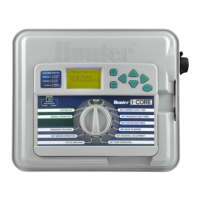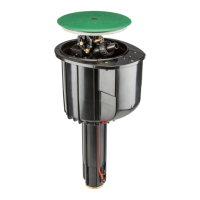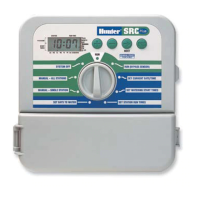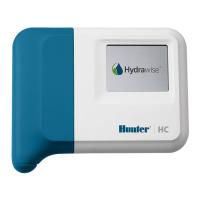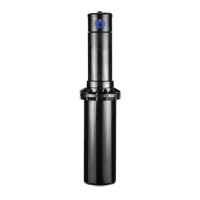Solenoid & SeRViCing And RePlACeMenT
Preventing Sprinkler Activation –
See the warning above regarding rotor activation when Solenoid is loosened or removed.
There are three ways to prevent activation of the rotor when the Solenoid is removed from the Pilot Valve:
• Thebestandmosteffectivewayistoshutdownthemainlineorthesub-mainlinethatsupplieswatertothe
rotor that is being serviced. Be aware that residual pressure may reside in the system piping even after that
valve has been closed. To purge residual pressure, activate a rotor or quick-coupler near to the rotor being
serviced or, move the selector to the manual On position.
• AtubingclamporlockingforcepstoolcanbeusedtopinchthesupplytubegoingintothePilotValve.The
pressurizedsupplytuberunsfromtheinletareaoftherotorandupintotheangecompartmentthenis
directly connected to the bottom tting on the Pilot Valve (g 132). Caution – care needs to be taken and an
appropriate tool used so as to not damage the tubing as it is clamped closed. A leaking supply tube will cause
the rotor to weep water while deactivated.
• A¼”tubingretainercanbeusedtopinchthesupplytubegoingintothePilotValve.Notethatthetubing
usedwithintheTTSrotor’sangecompartmentis
1
⁄8”tubing,NOT¼”tubing.Todoso,bendthesupply
tubing together and slide the tube retainer over the bent end to hold the tubing closed. The pressurized
supplytuberunsfromtheinletareaoftherotorandupintotheangecompartmentthenisdirectly
connected to the bottom tting on the Pilot Valve (g 132). Caution – care needs to be taken so as to not
damage the tubing as it is bent closed. This procedure is not recommended in cold weather conditions. A
leaking supply tube will cause the rotor to weep water while deactivated.
FIG 132
44
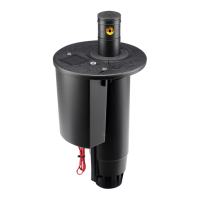
